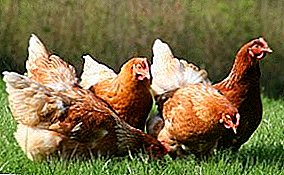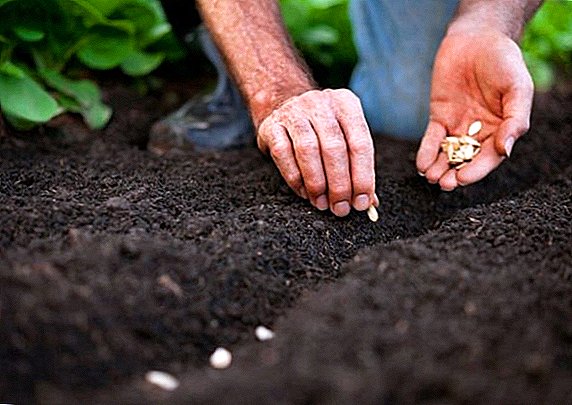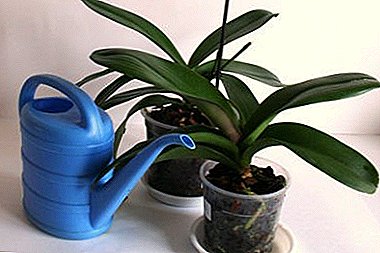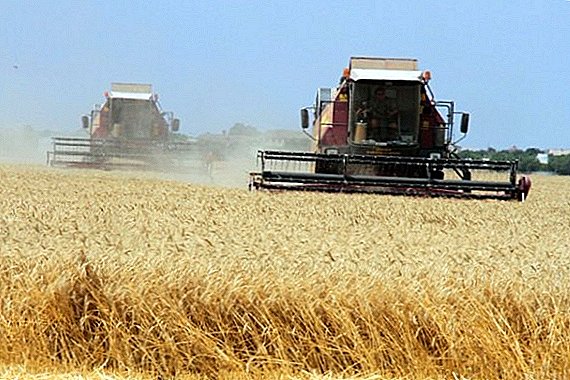
Coccidiosis is considered a very dangerous disease.
It is transmitted to poultry through inventory and food. Sick chickens lose their appetite, rush badly and eventually die.
Coccidiosis is one of the most common diseases in the poultry industry. The simplest parasites, which are the causative agents, multiply in the intestinal tract.
Because of this, there is a violation of the digestive processes. Dehydration, hypersensitivity to various infections and blood loss are also observed.
This disease is most common in chickens. Coccidiosis not only poultry, but also wild. These are partridges, sparrows and swallows. Chickens under the age of 2 months are considered to be the most susceptible to the disease.
What is coccidiosis in chickens?
 Coccidiosis in chickens was discovered in the 19th century.
Coccidiosis in chickens was discovered in the 19th century.
Even then, poultry farmers were faced with outbreaks of the disease, which was accompanied by blood diarrhea.
Today cases of coccidiosis are registered in almost all countries of the world.
It is difficult to find at least one chicken farm, the owner of which would not know anything about this disease.
It is known that coccidiosis is most dangerous in association with any other infections..
This is especially true for farms, where in limited conditions there are more than 15 thousand hens.
Pathogens
 The causative agents of coccidiosis, that is, coccidia, are widespread.
The causative agents of coccidiosis, that is, coccidia, are widespread.
There are several types of these protozoan parasites.
Their life cycle is quite complex.
Thus, infection occurs when the oocysts are ingested with water or feed.
In the gastrointestinal tract, the membrane is destroyed by the action of enzymes and bile, due to which sporozoites begin to actively proliferate in the intestinal epithelium.
The owners of some varieties of coccidia can only be certain species of birds, although exceptions are also found.
Although most pathogens are found in chickens, they are not well understood.
Eimeriatenella- This is the most common form that is resistant to negative external factors. It is capable of infecting a bird for a year.
When ingested, coccidia damages the mucous membrane and impairs digestive functions. Other species usually develop in the thick and thin intestine.
Some types of parasites infect only chickens. This is possible if there is a significant concentration of oocysts. In this case, they are localized in the duodenum.
Course and symptoms
 It is easy to notice coccidiosis in chickens.
It is easy to notice coccidiosis in chickens.
This disease is indicated by such symptoms.:
- constant head pulling;
- lack of appetite;
- ruffled feathers;
- swelling;
- liquid dung of light brown or reddish hue;
- droppings mixed with blood.
These signs usually persist for 4-5 days, after which the sick bird dies.
Coccidiosis is acute and chronic. In the first case, the disease lasts about 2-3 weeks. And usually it is observed in chickens.
The main signs are ruffled feathers, lack of appetite, the presence of feathers around the cloaca in the litter mixed with blood. Young animals also suffer from anemia and thirst.
Coordination of movement is greatly impaired. Due to severe exhaustion, the bird dies already for 2-5 days. In acute cases, the mortality rate is 50-70%.
 Chickens Master Gray is perfect for those who are going to breed birds for meat.
Chickens Master Gray is perfect for those who are going to breed birds for meat.One of the most unpleasant diseases in chickens is omphalitis. In this article we have tried to describe omphalite completely, so that you have no questions left.
In chronic form, the above symptoms are mild. The disease is often observed in adults and chicks from 4-6 months. Cases of death practically do not happen, but chickens lose weight, and their egg production decreases.
The main changes in coccidiosis are exhaustion and pallor of the mucous membrane. The remaining changes are concentrated in the intestines.
Their character depends on the variety of coccidia:
- If it is Eimeriatenella, then catarrhal enteritis is noted in the cecum.
- Infection with Eimeriaacervulina appears as white spots and stripes in the duodenum.
- If the infection has occurred due to Eimeriamaxima, then viscous mucus is mixed with blood in the small intestines.
- Eimerianecatrix leads to thickening and necrosis of the intestinal walls. There may also be clots of coagulated blood.
Diagnostics
 At the initial stage, it is very difficult to diagnose coccidiosis in chickens.
At the initial stage, it is very difficult to diagnose coccidiosis in chickens.
This explains the substantial economic damage.
At first, the individual looks healthy, but over time its productivity decreases.
Chick development stops, and adult chickens do not gain weight, although feed consumption is gradually increasing.
It is these signs that should cause concern.
When establishing the diagnosis should be considered epizootological forecasts, age of sick individuals, and also seasonality of the disease.
In addition, you should pay attention to the clinical signs and all pathological changes. The cause of the disease is usually confirmed by the presence of oocysts in the litter or scrapings from the intestinal mucosa.
After poultry slaughter, the diagnosis is made on the basis of the results of studying the state of the digestive system.
Usually, in coccidiosis, the carcass has a blue color, bloating and a significant filling of the intestine with fecal masses, as well as the presence of foamy mass in the blind processes.
Treatment
 For the treatment of coccidiosis in chickens or any other birds, various coccidiostats are often used.
For the treatment of coccidiosis in chickens or any other birds, various coccidiostats are often used.
Such drugs are divided into two groups: ionophore antibiotics and products derived from chemical synthesis.
The first option is not considered the best, since the effect of such drugs is identical. They negatively affect the permeability of cell membranes.
Coccidiostats such as ardinon-25, avatek, rigecostat or himkokkokd-17. Often they are combined with antibiotics.
It should be remembered that many drugs do not give a significant therapeutic effect. If the drug is added to the feed, it can lead to the death of the bird, because the medicine should be distributed evenly. At home, it is very difficult to do.
It is known that sulfa drugs also have anti-inflammatory properties. They are used for 3 days with a break of 2 days. For 1 kg of feed, 1 mg of the drug is sufficient. Norsulfazol give 3 days at 500 mg per 1 liter of water. It should be remembered that coccidiosis can affect one individual several times, provided that these are different types of coccidia.
Prevention and safety measures
 The most promising direction in the fight against the disease is immunization.
The most promising direction in the fight against the disease is immunization.
However, due to the high cost today only the hens and young animals are vaccinated.
Prevention helps to avoid the spread of infection and destroy coccidia that have begun to develop in the body of the bird.
Potassium permanganate, hydrated lime, formalin solution 3%, sodium and potassium alkali in this case are ineffective.
You also need to remember that the use of only one drug will not ensure successful prevention. For this purpose, you need at least 4 different tools. At the same time, it is necessary to pay attention to the fact that their mechanism of action is different.
To avoid the development of coccidiosis, cleanliness should be maintained in the house and in the walking yard.
Improve the immune system of chicken is possible thanks to good nutrition. It is best to choose quality food with vitamins and various nutritional supplements.
The easiest way to prevent the death of all livestock from coccidiosis due to preventive measures. The above simple recommendations will help increase the resistance of birds to various diseases. It is also worth doing vaccination, despite the difficulty of implementing this method.












